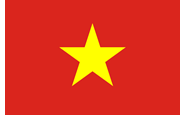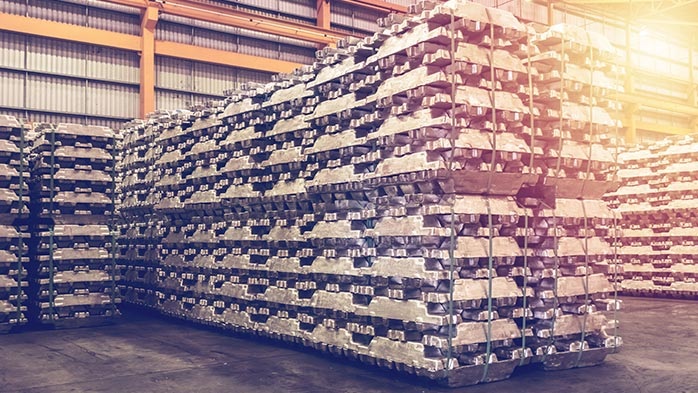Features

Price: Vietnam should not become a release valve for pressure on China
Written by Alan Price & John Allen Riggins
May 24, 2024
In conjunction with President Biden’s visit to Vietnam in September 2023, Vietnam’s government petitioned the US Department of Commerce (DOC) for “market economy” treatment. This would be a major trade concession, as DOC has recognized for years that Vietnam’s economy does not operate according to market principles. However, graduating Vietnam to market economy status would be factually incorrect, geopolitically naïve, and harmful to all US producers—particularly US steelmakers.
DOC considers Vietnam, China, and several former Soviet Union countries to be nonmarket economies (NMEs). Systemic, distortive, economic forces in these countries make it impossible for DOC to determine a true market price when calculating an antidumping rate. Therefore, DOC substitutes surrogate prices from market economies to calculate what the fair value of products would be without distortions. Doing so prevents DOC from underestimating the level of dumping coming from these countries.
When reviewing a country’s NME status, DOC must consider six factors: (1) currency convertibility, (2) labor and free bargaining, (3) the presence of foreign investments, (4) the extent of government ownership, (5) government control over resources and prices, and (6) other factors DOC deems appropriate. DOC does not need to find that all these circumstances exist to decide that a country is an NME.
Under the first five factors alone, Vietnam clearly is not a market economy. The US Trade Representative (USTR) has found that Vietnam “manages its exchange rate” to achieve economic goals, which has caused “persistent undervaluation” of its currency. According to the State Department, the only union in Vietnam with any authority is state-controlled. Foreign investments are ultimately subject to government approval, and state-owned companies account for nearly 30% of Vietnam’s GDP. These companies are financed through Vietnam’s near-total control over its banking sector, which provides preferential lending to state-owned companies.
The sixth factor is much more open-ended. Citing this factor, some commenters argue that DOC should consider purported geopolitical benefits of granting Vietnam market economy status. Specifically, these parties believe that greater economic integration with Vietnam would provide a counterweight to China’s influence and decouple American supply chains from overreliance on Chinese producers. This approach is incredibly shortsighted and based on two faulty assumptions.
First, the approach assumes that closer ties with the US will translate to distance from China. So far, this has not been the case. Just months after signing the US-Vietnam Comprehensive Strategic Partnership last September, Vietnam entered a series of 36 agreements with China that promised greater economic, political, and military cooperation. This included agreements to develop railway cooperation between the two countries, designed to facilitate greater cross-border trade as part of China’s Belt and Road Initiative.
Second, this approach assumes that Chinese products and producers will remain in China. Yet Chinese foreign direct investment in Vietnam has skyrocketed in recent years. In 2023, for the first time, China (including Hong Kong) was the largest source of foreign direct investment in Vietnam. China also led all other countries with approximately 700 new investments in Vietnam last year. The US was tenth. The total number of Chinese investments in Vietnam is now more than 4,000, amounting to more than $26 billion, according to Vietnam’s Ministry of Planning and Investment.
Rather than distancing itself, Vietnam has become more reliant on Chinese investment and raw materials. As a result, Vietnam is not so much an alternative manufacturing hub as a processing and assembly platform for Chinese producers. In many cases, upstream inputs produced in China are shipped to Vietnamese subsidiaries for minor processing into downstream products to avoid US duties.
The US government has seen this firsthand. In 2020 alone, US Customs and Border Protection (CBP) prosecuted evasion related to more than $300 million worth of Chinese products—much of which was transshipped through Vietnam. To date, CBP has found on 17 separate occasions that Chinese products were transshipped through Vietnam to evade duties. Likewise, DOC has found that Chinese producers are performing minor alterations to their merchandise in Vietnam to avoid AD/CVD duties on Chinese products.
This is certainly true in the steel industry. Vietnamese producers of downstream steel products—some of which are affiliates of Chinese companies—use imported Chinese steel inputs to produce products that are then shipped to the US as products of Vietnam. DOC has previously concluded that China circumvented US duties on hot-rolled steel, cold-rolled steel, corrosion-resistant steel, circular welded pipes, and light-walled welded rectangular pipes by performing minor processing on these products in Vietnam.
And these trade flows will only swell further. In 2023, Vietnam became China’s top steel export destination for the first time, with imports from China increasing nearly 70% compared to 2022. These imports are sold in Vietnam at unfairly low prices and fabricated into downstream exports. China is outsourcing industrial subsidies and other market distorting practices to Vietnam, while avoiding the AD/CVD, Section 232, and Section 301 duties designed to address these problems.
The same phenomenon is present for aluminum. Chinese aluminum producers ship aluminum to Vietnam to avoid duties. The aluminum is extruded in Vietnam—often by China-linked companies—and exported to the US. This rush of imports has forced US aluminum extruders to file a new antidumping case on imports from Vietnam.
Counteracting China’s unfair trade practices has been a priority for the Biden administration. President Biden recently underlined this point when he requested that the USTR increase tariff rates on certain imports from China—including certain steel and aluminum products. This decision was based, in part, on USTR’s analysis of the role Section 301 measures play in combating market-distorting over-production in the Chinese steel industry.
The administration has also made notable efforts to modernize trade remedy regulations that combat China’s outsourced industrial subsidies. As we previously wrote, the DOC recently removed its long-standing prohibition on countervailing cross-border subsidies (i.e., where country A provides subsidies within the territory of country B). Previously, US companies had little recourse when China provided subsidies to companies in neighboring countries through the Belt and Road Initiative. Now, DOC can correct for these subsidies. This too has direct applications to steel, due to the increasing number of subsidized state-owned and state-supported Chinese steel companies investing in Southeast Asian countries.
Granting Vietnam market economy status would undermine these positive steps. China is increasingly using Vietnam to avoid its own NME status, as well as other defensive US import duties. USTR’s recommendation to increase Section 301 tariffs on certain steel products is intended to “strengthen the effectiveness of the actions by reducing opportunities for circumvention and help ensure the long-term viability of US production.” The administration cannot achieve this goal if Chinese producers can simply funnel steel and other products through Vietnam.
DOC’s decision is currently due July 26, 2024. Numerous elected officials, US producers, and other impacted parties have written DOC to explain how granting Vietnam’s request would not only incentivize larger volumes of unfairly priced Vietnamese goods, but it would also accelerate China’s economic influence in Vietnam. Reversing Vietnam’s NME status is simply not a realistic solution to counteract China and would come at the expense of US industries and workers.
Editor’s note
This is an opinion column. This commentary represents the authors’ individual views and is not intended to represent the views of Wiley Rein LLP or its clients. The views in this do not necessarily reflect those of SMU either. We welcome you to share your thoughts as well at info@steelmarketupdate.com.

Alan Price
Read more from Alan Price
John Allen Riggins
Read more from John Allen RigginsLatest in Features

US pols urge ‘domestically owned’ steel industry
US Sen. Jim Banks (R-Ohio) and Rep. Frank Mrvan (D-Ind.) have written a letter in support of a “domestically owned and operated American steel industry” being vital to national security.

SunCoke earnings slip in Q1 as pact with USS on Granite City extended
SunCoke Energy posted lower earnings in the first quarter. Meanwhile, the company said it has extended the cokemaking contract for U.S. Steel’s Granite City Works in Illinois through the end of September 2025.

Final Thoughts
Given the news about tariffs and bringing back industries to the US, a brief look back in time may show how our economy changes with technological advances and the shifting economies of scale.

AISI: Domestic mill output climbs higher
Raw steel mill output ticked higher last week, now up to the highest weekly rate recorded in over seven months, according to the American Iron and Steel Institute (AISI).

Join AMU’s Greg Wittbecker on May 14 for a Community Chat on aluminum, tariffs, and trade
AMU’s Greg Wittbecker, an aluminum industry veteran, will address not only US tariffs but also evolving trade routes - and how supply chains are (or aren’t) adjusting. He’ll also touch on broader industrial impacts, from auto layoffs to the potential ripple effect of maritime tax policies.
